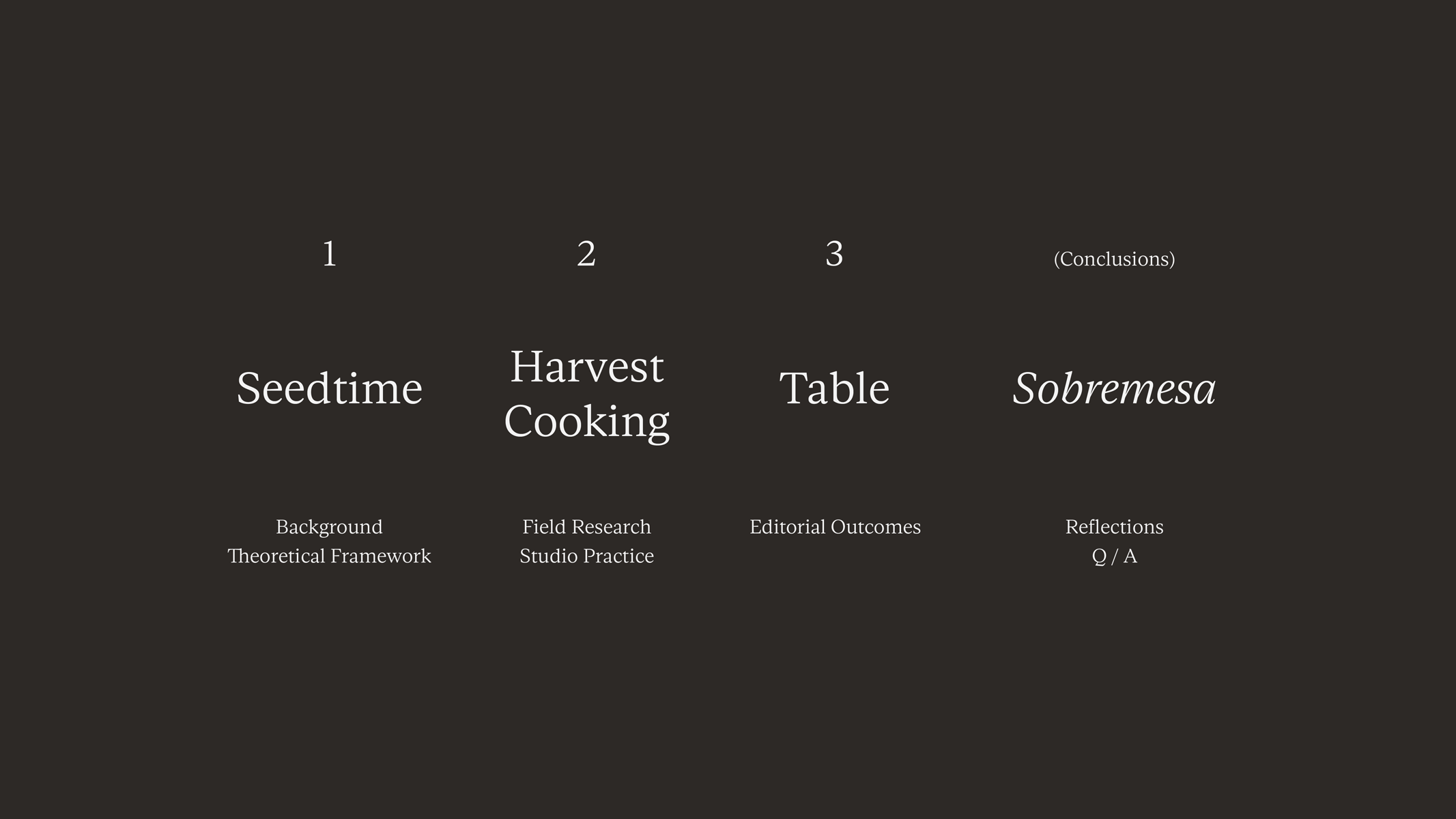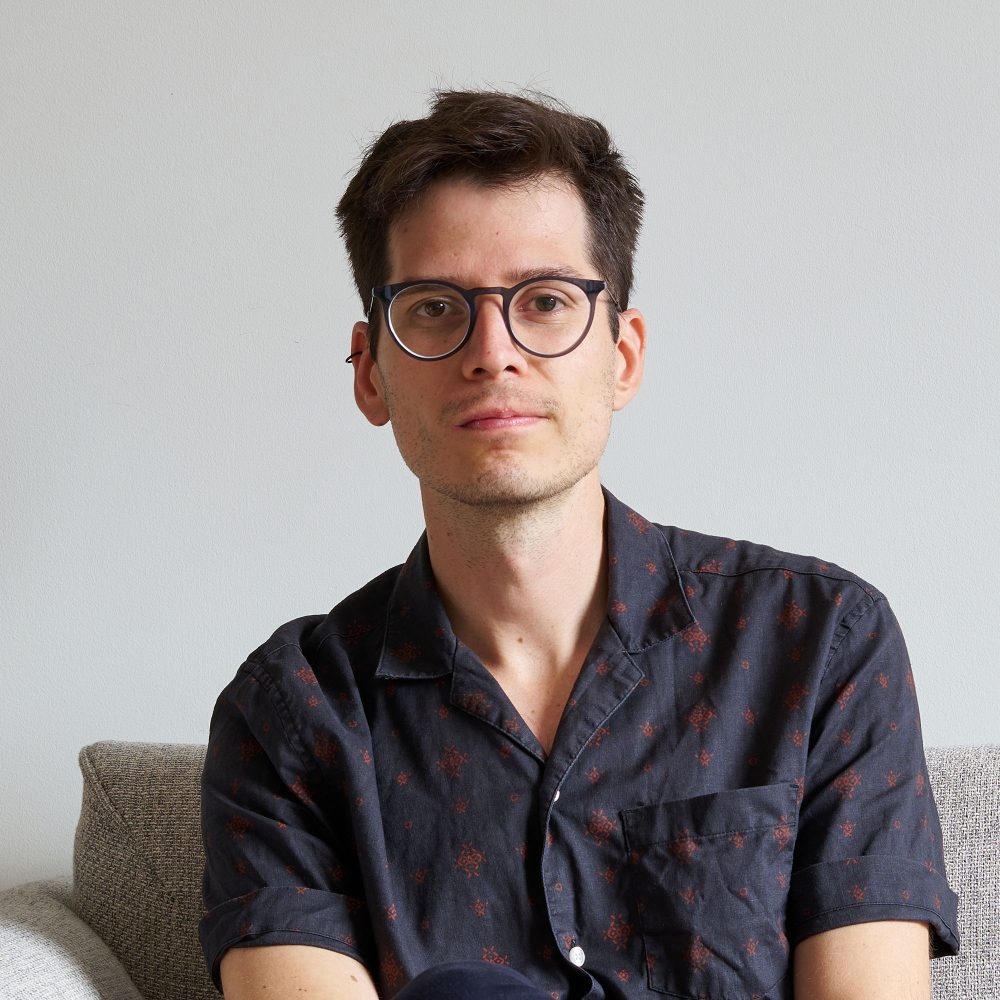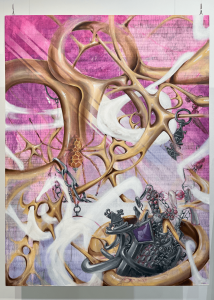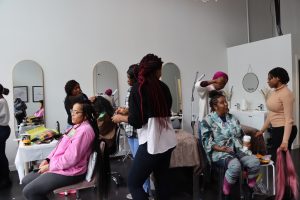Sown Narratives: A personal exploration of alternative food narratives through editorial design practice
Diego Hernandez Dorantes
See it On Campus: Level 2
Visitor InfoMay 9 – 23. In front of the Aboriginal Gathering Place.
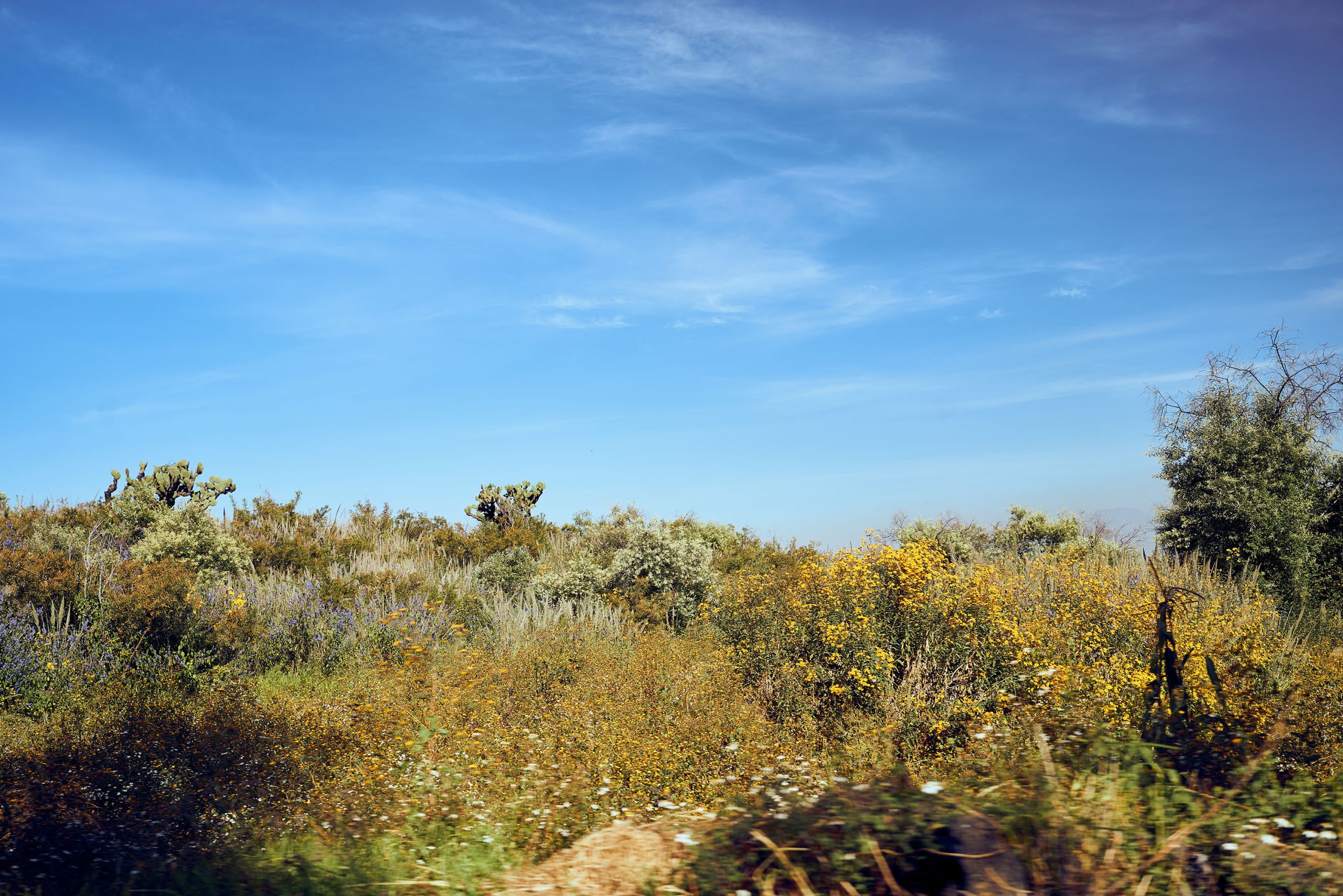
Abstract
This research project explores the intersection between alternative food and editorial design. To investigate this space, it proposes generating a body of editorial outcomes embodying a series of alternative food narratives found in Vancouver and Mexico City. The project is grounded on the necessity of looking for alternative narratives related to food that contrast with the current conventional food industry—driven by efficiency and profit. From this perspective, it proposes the editorial design practice as a critical mechanism to empower voices that aim for other possible ways to relate to food. This is based on the premise that awareness of alternative food narratives is necessary to face the negative impacts of a food system that is affecting our lands, bodies, and cultures. Sown Narratives explore these ideas from a practice-based approach centred on reflective practice. The project focuses on a body of editorial work related to typography, photography, and illustration. With these explorations, it inquires about how to bring alternative food narratives into the creative practice of editorial design, stating that the form of these accounts also creates meaning.
Context
Since the second half of the last century, we have been experiencing a radical change in our food systems. Led by a macro-scale industrialized model, our current primary food system is based on efficiency and profit as the main goals. This has had relevant consequences in ecological, social, and cultural matters. The current inputs-dependent food industry threatens biodiversity, pollutes water supplies, decertifies soil, and makes people sick. Consequently, this food system affects lands, bodies, and cultures.
While many voices have been proclaiming against this regime, the aesthetic dimension of their narratives has often been overlooked. For example, the editorial design of alternative food publications hasn’t yet received much attention in design research. This also reflects the challenge of including editorial design practices in many local, small, or alternative food-producing communities.
The structure
This project is presented in four main sections. To play with the relationship and parallels between alternative food and editorial design practices, the names of these sections represent a story in which food is seen from its origin to the cooking process and finally in the after-meal conversations. The first section, “Seedtime,” represents the planning and the theoretical framework. The second section, “Harvest,” shows the gathered documentation of narratives in specific alternative food communities. “Cooking” represents the studio practice. Finally, “Sobremesa”—a word in Spanish that means the casual conversations that occur after a meal—presents the reflections made after the editorial outcomes.
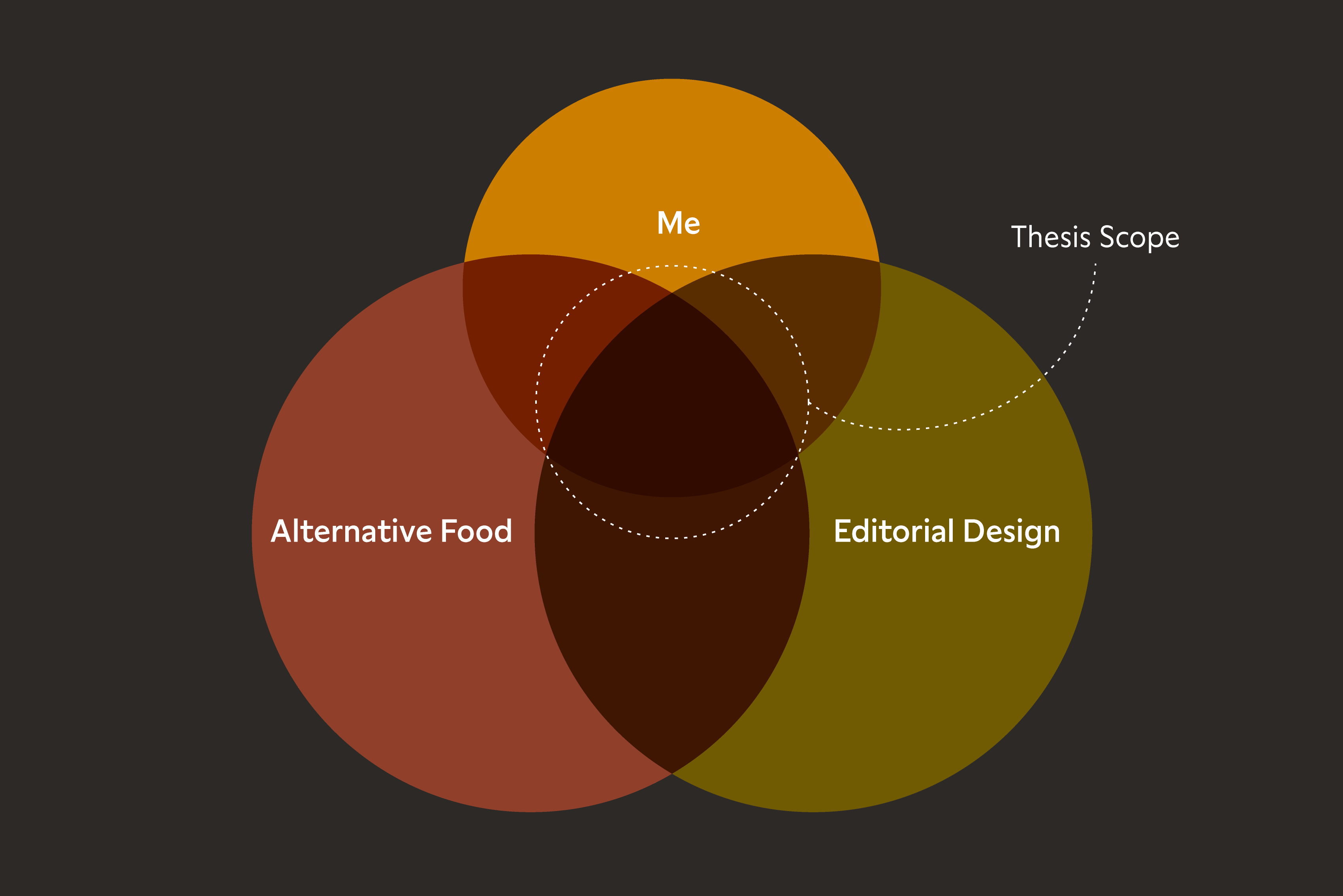
Seedtime
This project was grounded in understanding and reflecting on three main concepts: alternative design, editorial design, and my background. These concepts were explored through empirical observations, literature reviews, and critical analysis.
Harvest
Harvest represents the documentation made in field research. This primary research was conducted to engage with alternative food narratives that offer different visions and practices to the conventional food discourse.
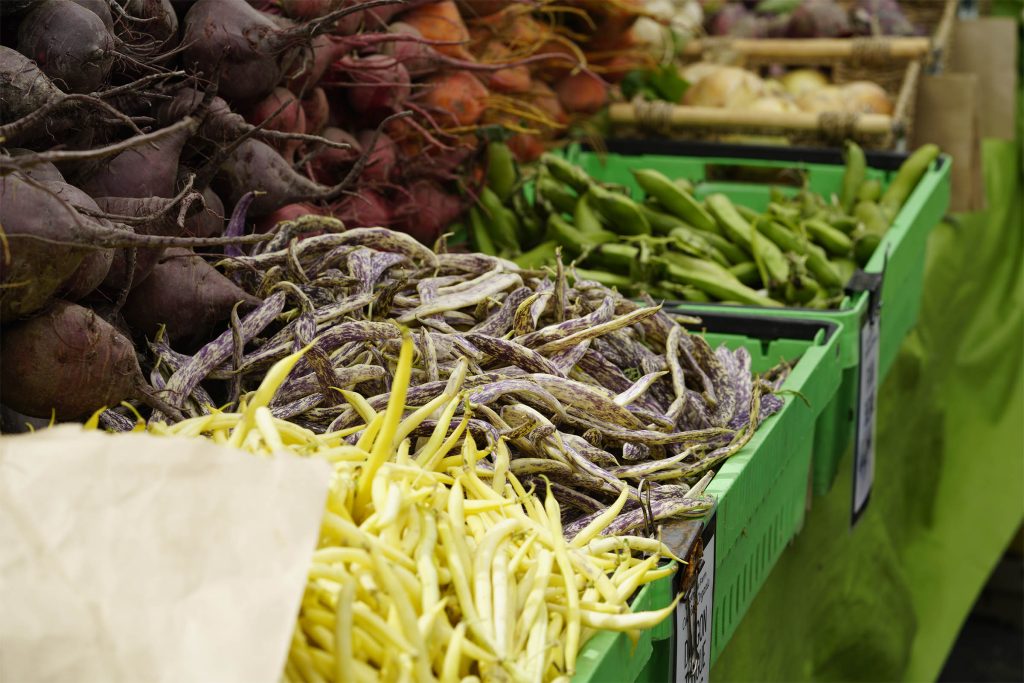
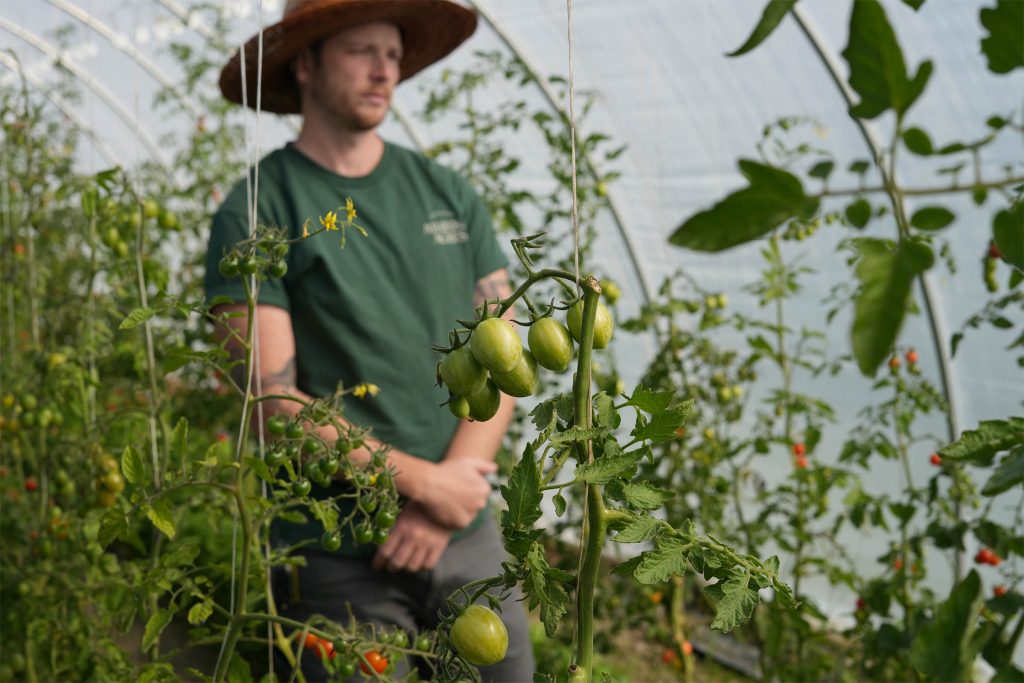
Farmers’ Markets, Vancouver, BC ↑
Athiana Acres, Steveston, BC ↑
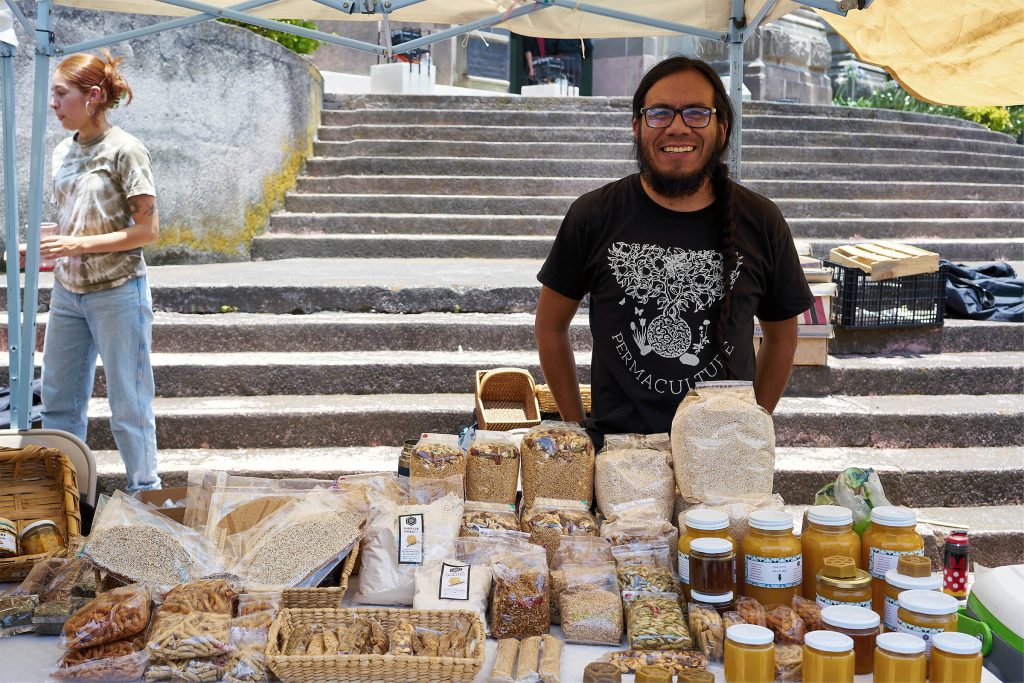
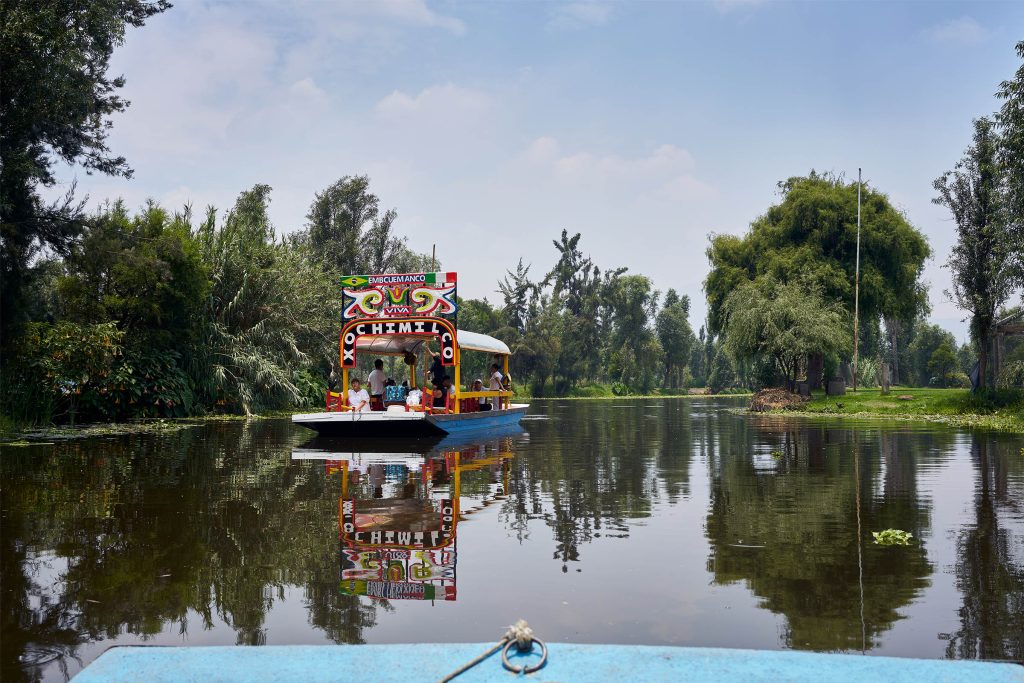
Mercado Alternativo Tlalpan, Mexico City ↑
Arca Tierra, Mexico City ↑
Cooking
Cooking represents the studio practice made to embody the alternative food stories found. Through a series of experiments and explorations, the editorial practice was explored, focusing on typography, photography, and illustration. Each of these projects explored concepts found in alternative food narratives, like regenerative, visibility, reconnection, honesty, recognition, and seasonality. Following are some examples of those explorations.
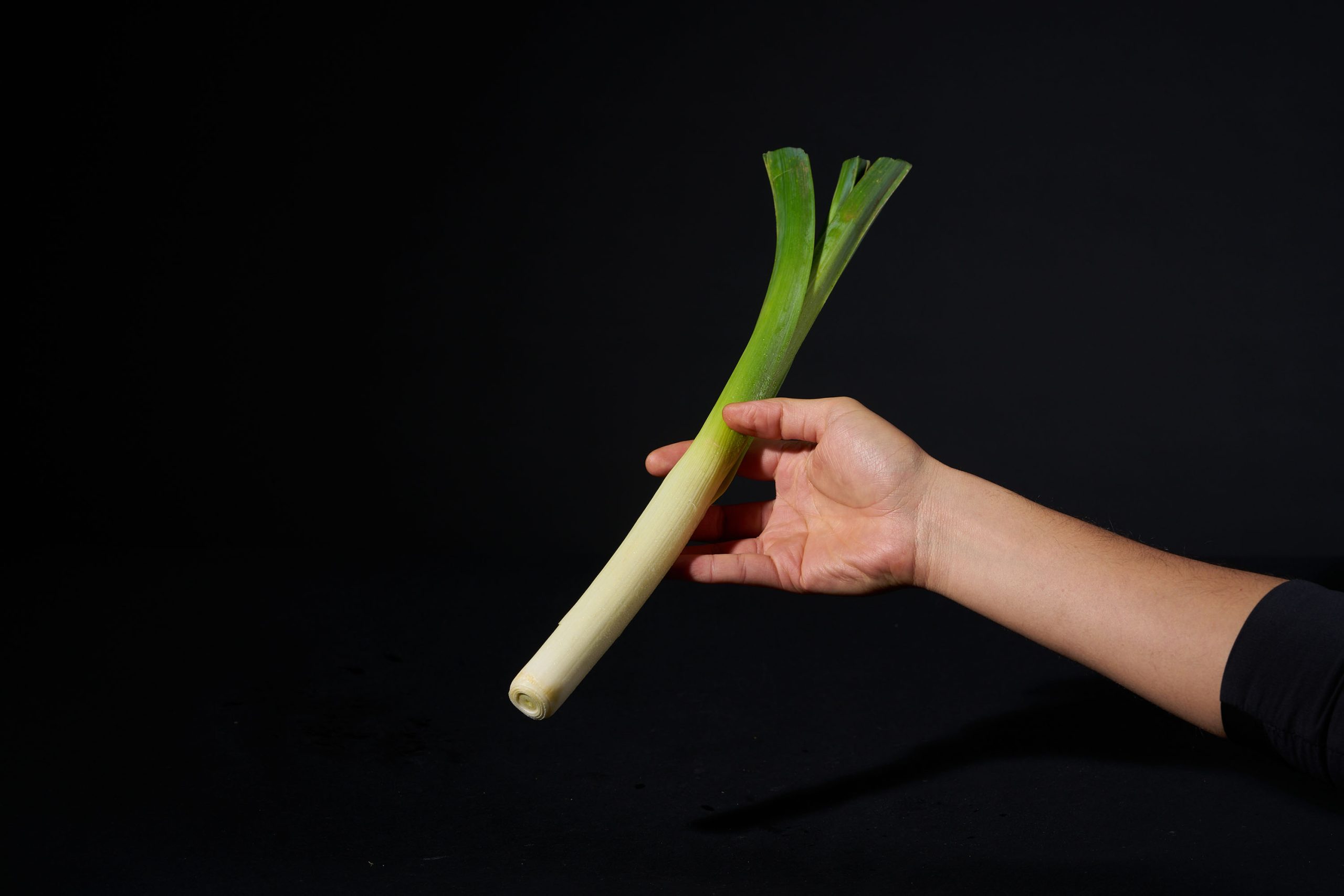
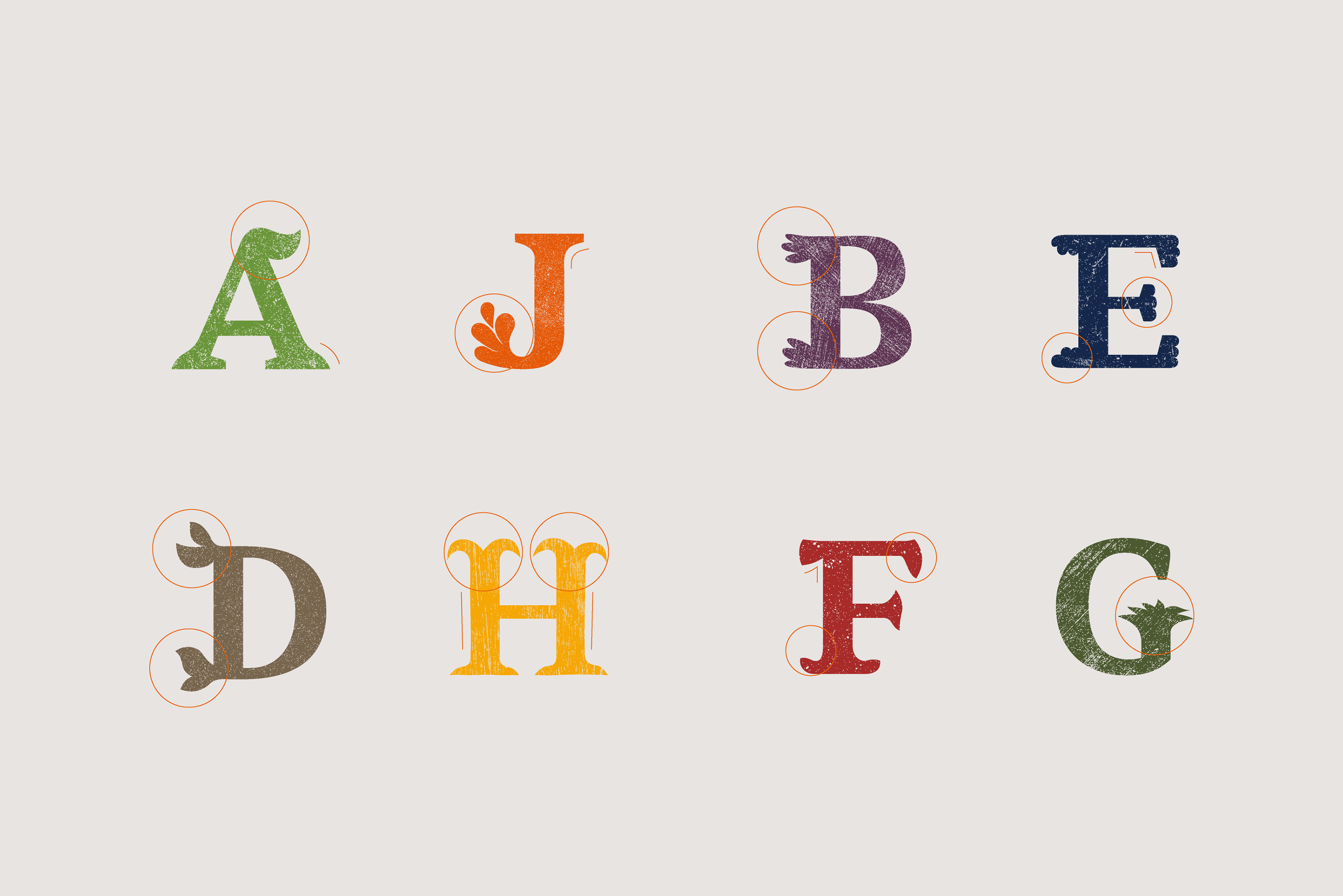

Table (Editorial Outcome)
Food Journeys
Food Journeys is a publication that addresses alternative food narratives in different cities. It is part journal, part magazine, and part recipe book, exploring alternative food and its expressions. The publication uses photography and illustration to represent a series of encounters with practices, communities, and ingredients. The project aims to bring perspectives answering what is honest, conscious, and fair food in different contexts and raise awareness about hidden practices and ignored voices around alternative food.
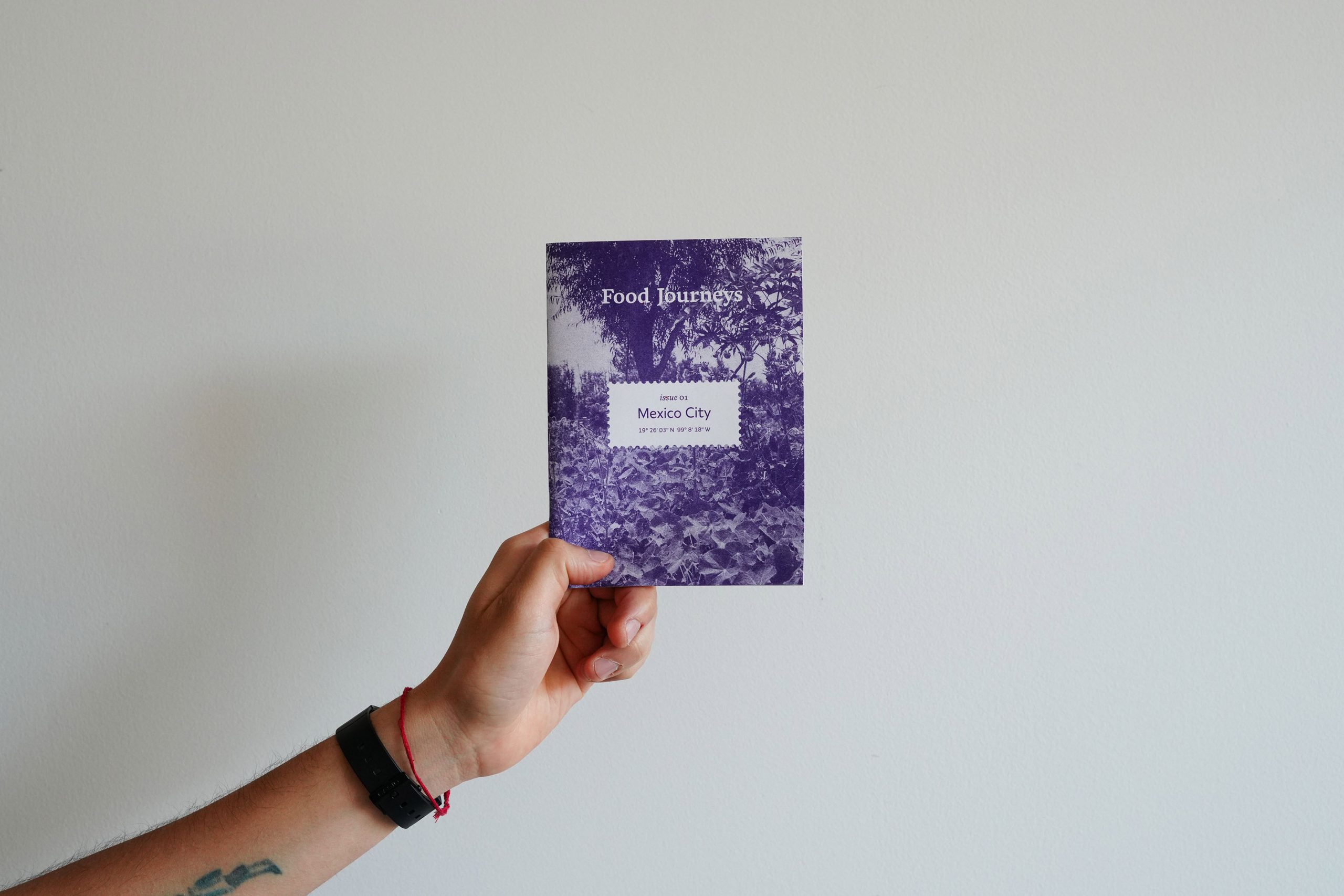
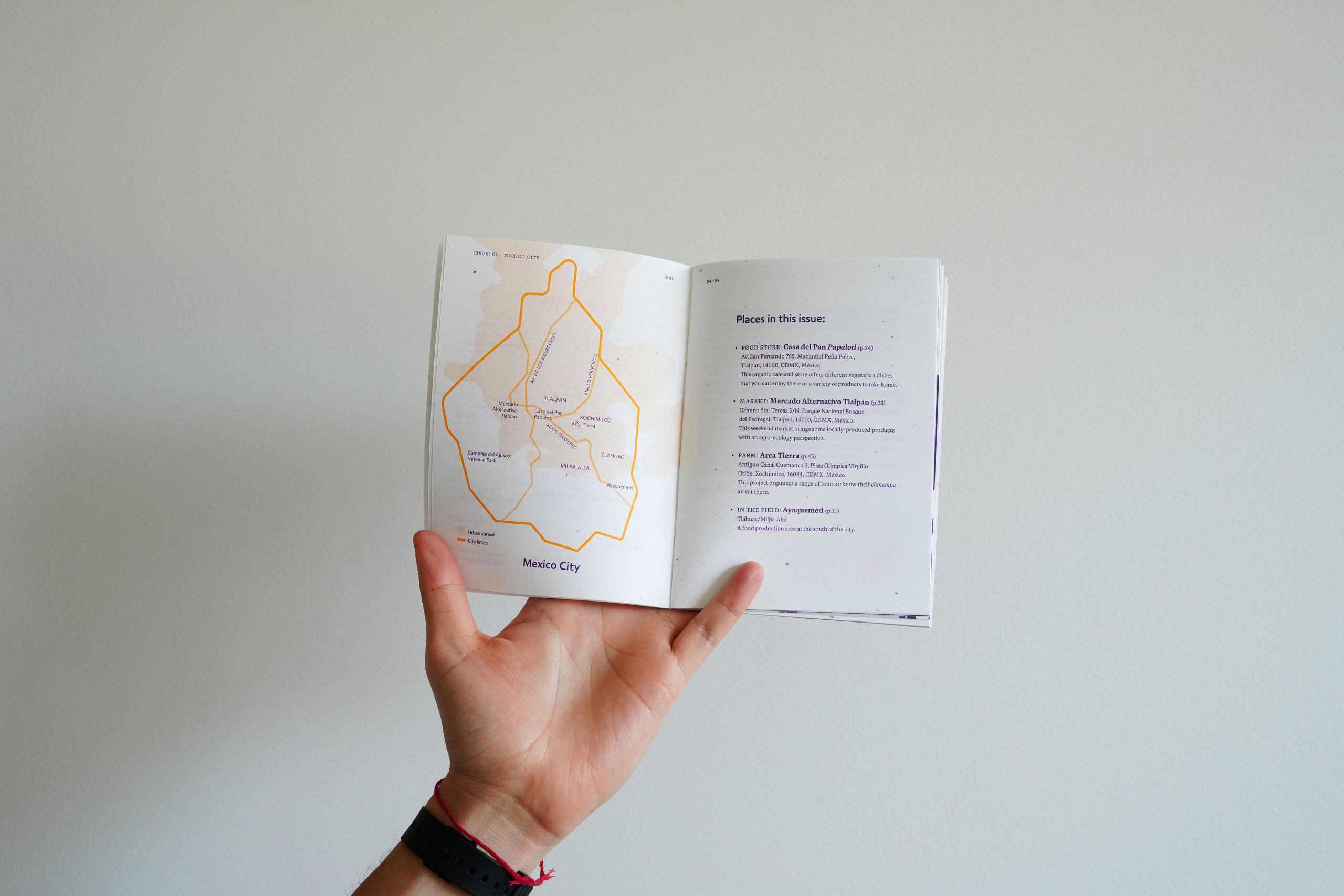
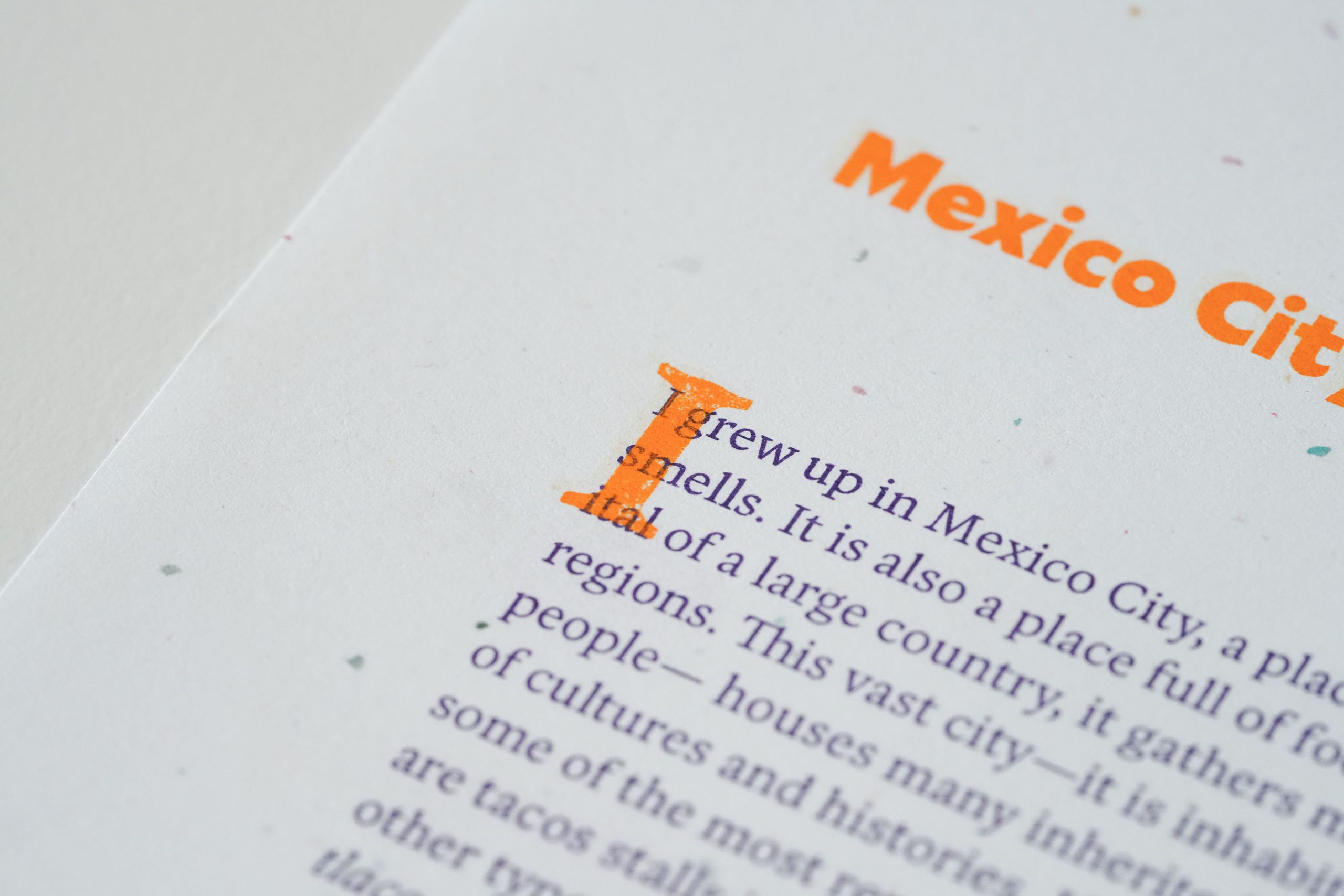
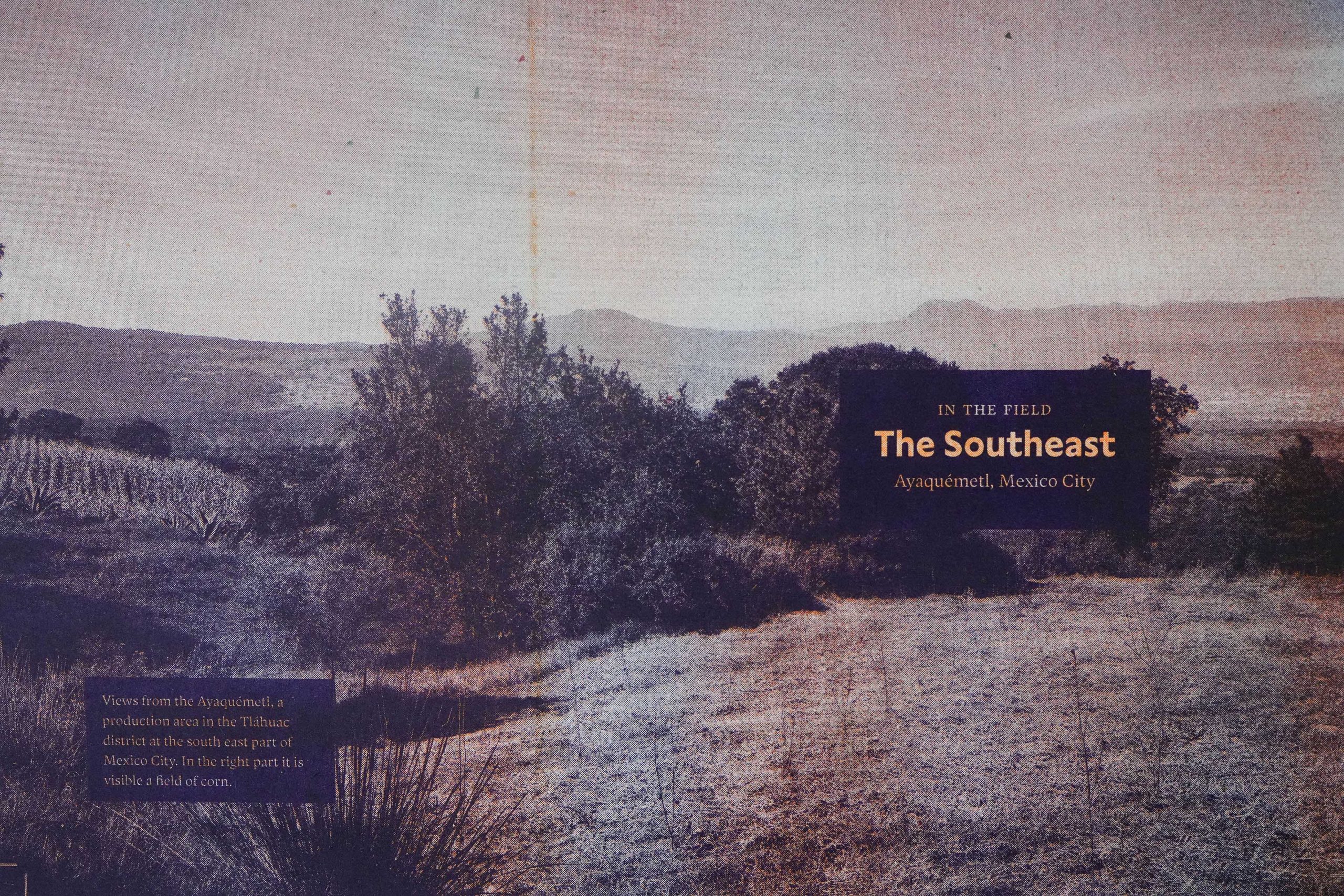
Sobremesa
Food and publications have a great resonance in our cultures, yet they are frequently overlooked, perhaps due to their ubiquitous nature. Being so present in our lives, they escape our conscious attention. However, they don’t escape our interactions with them, which are, on many occasions, full of subtle, ephemeral and intimate details. Their apparently trivial condition doesn’t make them less important. On the contrary, they are quite related to shaping our lands, bodies, and cultures and our relationship with food.
Editorial design offers the possibility of getting closer to our food. It has the potential to become a bridge of different voices, a curated space of exchange and a canvas to depict what food means to us. It can also represent alternative views of the established system, offering new perspectives of our reality. In this sense, they push to new realities, see the cracks
in a failed system, and balance our fast lives. However, in this construction, aesthetics play an essential role.
This exploration generated insights about the editorial design process. It began as a traditional linear path, proposing a series of steps to develop an editorial project. But in the end, it was a more complex, organic and fluid pathway. Integrating different alternative food concepts into the editorial design practice led to a slow pace and reflective practice that resulted in unexpected outcomes. Understanding this process as relevant to the form that narratives take was one of the resolutions that came from this exploration. It also led to the understanding that there are many possible ways to interpret these stories and that it is necessary to push for diversity in the future of the editorial design practice as a way to include voices that still aren’t as prominent as others. Bringing new ways of telling food stories would allow us to also relate to food in many possible ways that aim to bring a more balanced, fair and honest food.
